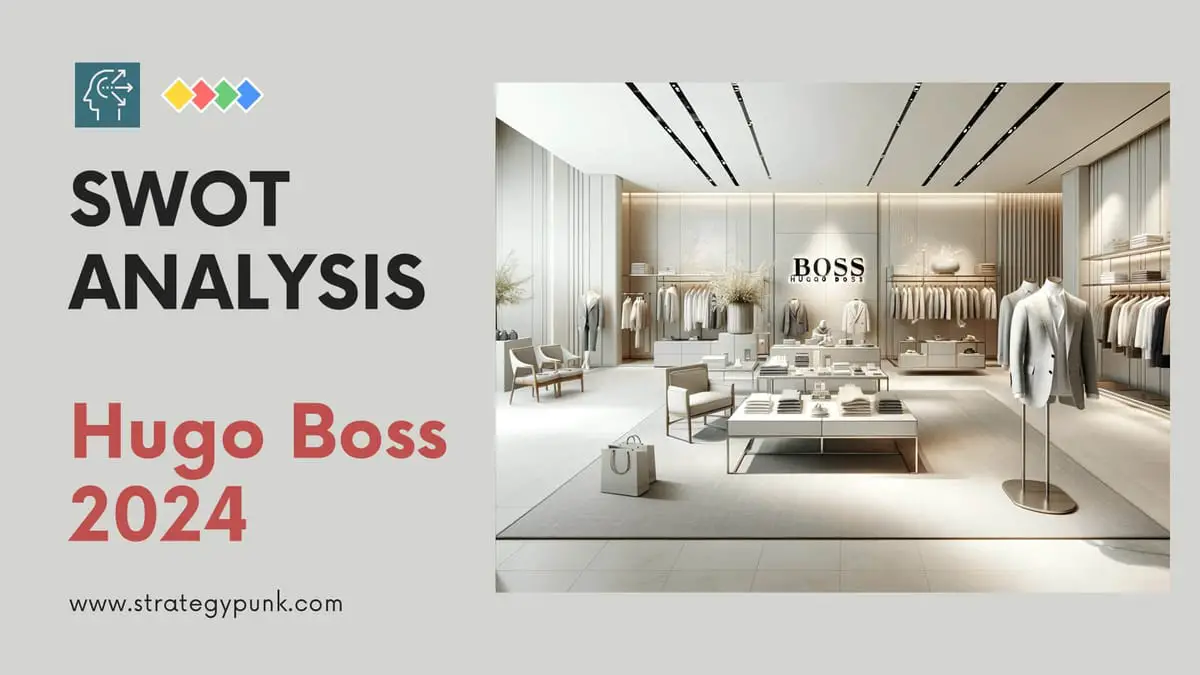Porter's 5 Forces Analysis for Hugo Boss: Free Guide & PPT 2024
Discover strategic insights with our free 2024 Hugo Boss Porter's 5 Forces Analysis guide and PPT template.

Introduction
In the fast-paced fashion world, understanding the dynamics that drive success can be as intricate as designing the perfect suit. Yet, one model stands out for its clarity and insight: Porter's Five Forces.
As we delve into the world of Hugo Boss, a titan in the luxury fashion industry, applying this model will not just enlighten us; it will guide us through the fabric of strategic decision-making that weaves the future of this iconic brand.
Porter's 5 Forces Framework
Developed by Michael E. Porter in 1979, the Five Forces Analysis offers a robust framework for evaluating a market's competitive intensity and attractiveness.
These forces include the threat of new entrants, the bargaining power of suppliers, the bargaining power of buyers, the threat of substitute products or services, and competitive rivalry within the industry.
Background of Hugo Boss
Hugo Boss AG, often styled as BOSS, is a beacon of high-end fashion, established in 1924 in Metzingen, Germany. With a reputation for quality and sophistication, Hugo Boss has navigated through the tides of time to develop a global presence, catering to a clientele that values apparel and the statement it makes.
Hugo Boss Porter's Five Forces
Hugo Boss operates in the highly competitive global fashion and luxury goods industry, rivaling well-established luxury brands and fast fashion players.
A Porter's Five Forces analysis allows us to examine Hugo Boss's competitive landscape regarding barriers to entry, buyer power, supplier power, threat of substitutes, and degree of rivalry.
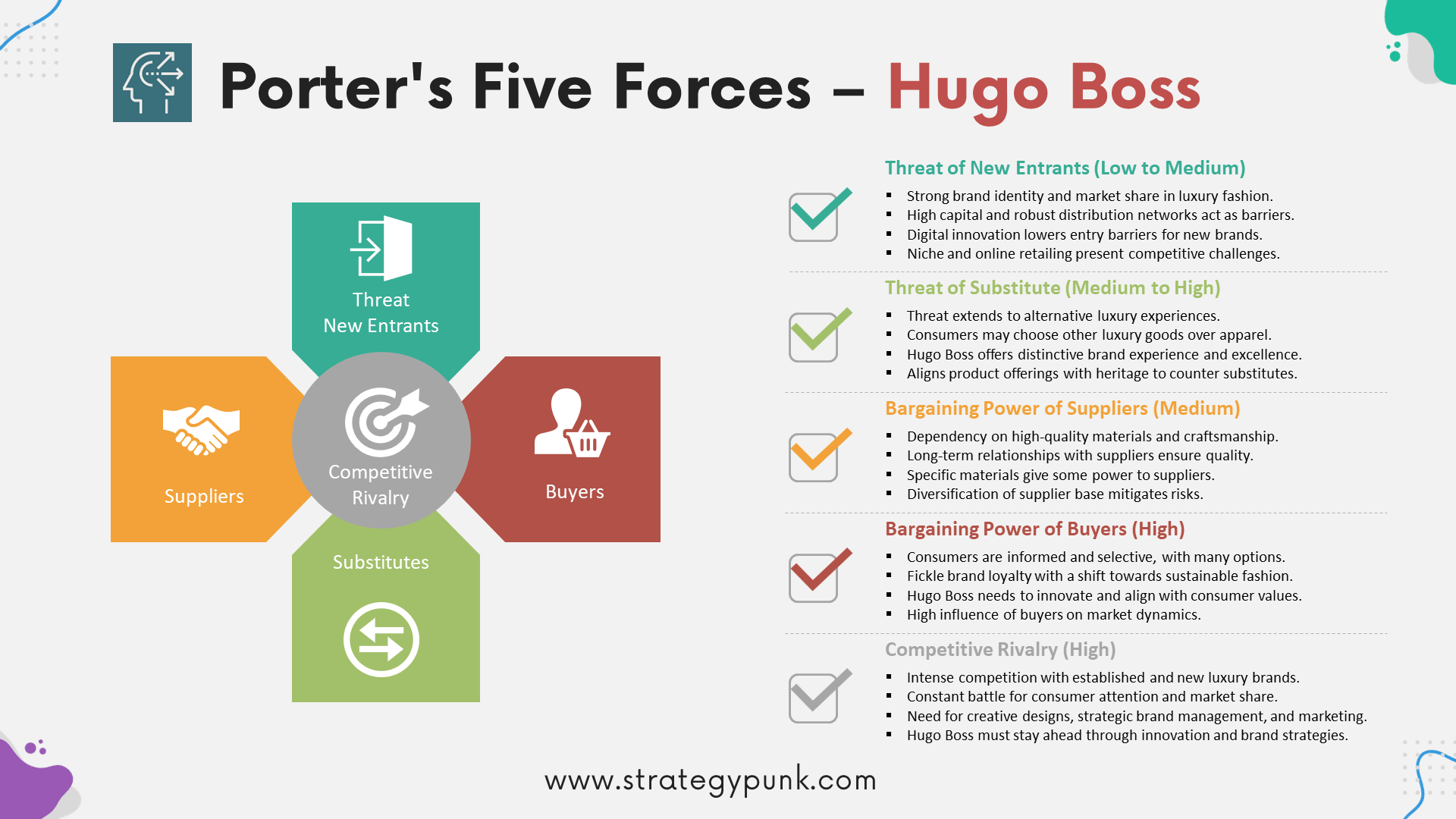
Threat of New Entrants (Low to Medium)
Hugo Boss enjoys a strong brand identity and significant market share in the luxury fashion sector. However, the high capital requirement and the necessity for a robust distribution network are barriers. Digital innovation and online retailing have lowered entry barriers for niche and upcoming brands.
Bargaining Power of Suppliers (Medium)
The luxury fashion industry relies on high-quality materials and craftsmanship. While Hugo Boss has established long-term relationships with its suppliers to ensure quality, the specificity of materials can give suppliers some bargaining power. However, Hugo Boss's diversification of its supplier base helps mitigate this risk.
Bargaining Power of Buyers (High)
Today's consumers are informed, selective, and have many options. Brand loyalty is fickle, and the shift towards sustainable and ethical fashion has given buyers more influence. To maintain its market position, Hugo Boss must continuously innovate and align with consumer values.
Threat of Substitute Products (Medium to High)
In the luxury segment, the threat of substitutes is not just about other clothing options but extends to the overall luxury experience. Consumers might opt for alternative luxury experiences over apparel. Hugo Boss counters this by offering a distinctive brand experience and product excellence that aligns with its heritage.
Competitive Rivalry (High)
The luxury fashion industry is intensely competitive, with brands constantly vying for consumer attention and market share. Hugo Boss faces competition from established luxury brands and new entrants with innovative business models. Staying ahead requires not just creative designs but strategic brand management and marketing.
Hugo Boss Strategies for Success
Summary
Hugo Boss's approach to navigating the competitive landscape is multifaceted. It emphasizes innovation in design and sustainability, ensuring its collections resonate with contemporary and eco-conscious consumers.
The brand leverages its heritage in craftsmanship while embracing digital transformation to enhance customer experience and operational efficiency. Strategic partnerships and celebrity endorsements also play a crucial role in maintaining its allure and market position.
Hugo Boss faces moderate to high competitive pressures from all forces in Porter's analysis. To sustain future solid growth and profitability, some recommended strategies include:
- Continue expanding brand awareness and appeal among young luxury consumers
- Leverage technology and digital channels to accelerate e-commerce sales
- Open additional Hugo Boss retail stores in emerging markets
- Pursue exclusive sourcing arrangements for proprietary fabrics and materials
- Develop innovative product designs and capitalize on fashion trends
- Maintain wholesale partnerships for distribution scale
- Promote operational excellence to achieve cost efficiencies and higher margins
If Hugo Boss pursues these approaches, it can affirm itself as one of the premier modern fashion houses while driving financial performance.
Digital Transformation and Market Entry Barriers
The digital era has reshaped the fashion industry, significantly lowering barriers to entry. For Hugo Boss, this means facing new competitors who leverage online platforms for brand building and direct sales.
The challenge and opportunity lie in embracing digital transformation—enhancing e-commerce platforms, utilizing social media for engagement, and employing data analytics for consumer insights.
These strategies can help maintain Hugo Boss's competitive edge by offering personalized shopping experiences and streamlining operations, ensuring they remain a step ahead in the digital marketplace.
Sustainability as a Competitive Factor
Sustainability has transitioned from a niche concern to a central competitive factor in luxury fashion. Hugo Boss's commitment to sustainability can enhance its bargaining power with increasingly eco-conscious buyers.
By integrating sustainable practices across its supply chain and product lines, Hugo Boss meets consumer demand and differentiates itself from competitors. This focus on sustainability can improve brand loyalty and attract a demographic willing to invest in environmentally responsible luxury fashion.
Innovation in Supply Chain Management
Innovation in supply chain management presents a significant opportunity for Hugo Boss to negotiate better terms with suppliers and reduce costs. Implementing advanced technologies such as AI for demand forecasting, blockchain for traceability, and sustainable sourcing practices can lead to more efficient operations.
These improvements can enhance Hugo Boss's bargaining power by ensuring supply chain resilience, quality control, and ethical sourcing, which are increasingly crucial to the brand and its customers.
Consumer Behavior and Brand Loyalty
Changing consumer behaviors, particularly the demand for personalized and omnichannel shopping experiences, impact buyers' bargaining power. Hugo Boss can enhance brand loyalty through customized marketing, exclusive online content, and loyalty programs.
Understanding and adapting to these behavioral shifts are crucial for Hugo Boss to maintain a strong relationship with its customers and secure its market position in the luxury fashion sector.
The Threat of Fast Fashion and Direct-to-Consumer Brands
Fast fashion and direct-to-consumer brands represent a significant threat of substitutes to traditional luxury fashion houses like Hugo Boss. These competitors offer trend-led clothing at a fraction of the price and faster turnaround times, appealing to a broader audience.
To counter this threat, Hugo Boss can emphasize its heritage, craftsmanship, and the superior quality of its products. Adopting a more agile approach to design and production can help Hugo Boss respond more quickly to fashion trends while maintaining its luxury status.
Strategic Collaborations and Partnerships
Strategic collaborations and partnerships can significantly impact competitive rivalry and market positioning. For Hugo Boss, partnerships with tech companies, influencers, and other brands can open new marketing channels and target audiences.
These collaborations can also lead to innovative product lines and unique customer experiences, enhancing Hugo Boss's brand appeal and differentiating it from competitors in the luxury fashion market.
Conclusion
The Five Forces Analysis of Hugo Boss underscores the complexity of the luxury fashion market. It reveals how the brand has successfully navigated challenges by leveraging its strengths and strategically addressing areas of vulnerability.
For Hugo Boss, understanding these forces is not just about surviving; it's about thriving in a competitive and ever-evolving landscape.
Frequently Asked Questions
What makes Porter's Five Forces a valuable tool for Hugo Boss?
It offers a structured way to analyze competitive forces and identify strategic opportunities to strengthen its market position.
How does Hugo Boss maintain its competitive edge?
Through continuous innovation, emphasis on sustainability, strategic marketing, and leveraging digital technology to enhance customer experience.
What is the biggest challenge Hugo Boss faces according to Porter's Five Forces?
The intense competitive rivalry within the luxury fashion industry poses a significant challenge, requiring ongoing innovation and strategic brand management.
How does digital transformation impact Hugo Boss?
It presents opportunities for operational efficiency, customer engagement, and market expansion, although it also lowers barriers for new entrants.
Can Hugo Boss mitigate the bargaining power of buyers?
Hugo Boss can enhance customer loyalty and reduce buyer power by offering unique, high-quality products and experiences that align with consumer values and trends.
Porter's 5 Forces Analysis for Hugo Boss PowerPoint Template
free and fully editable PPT template
Equipped with a detailed understanding of industry forces, executives can make informed strategic choices. Please download this free PowerPoint template to visualize Porter's analysis for Hugo Boss.
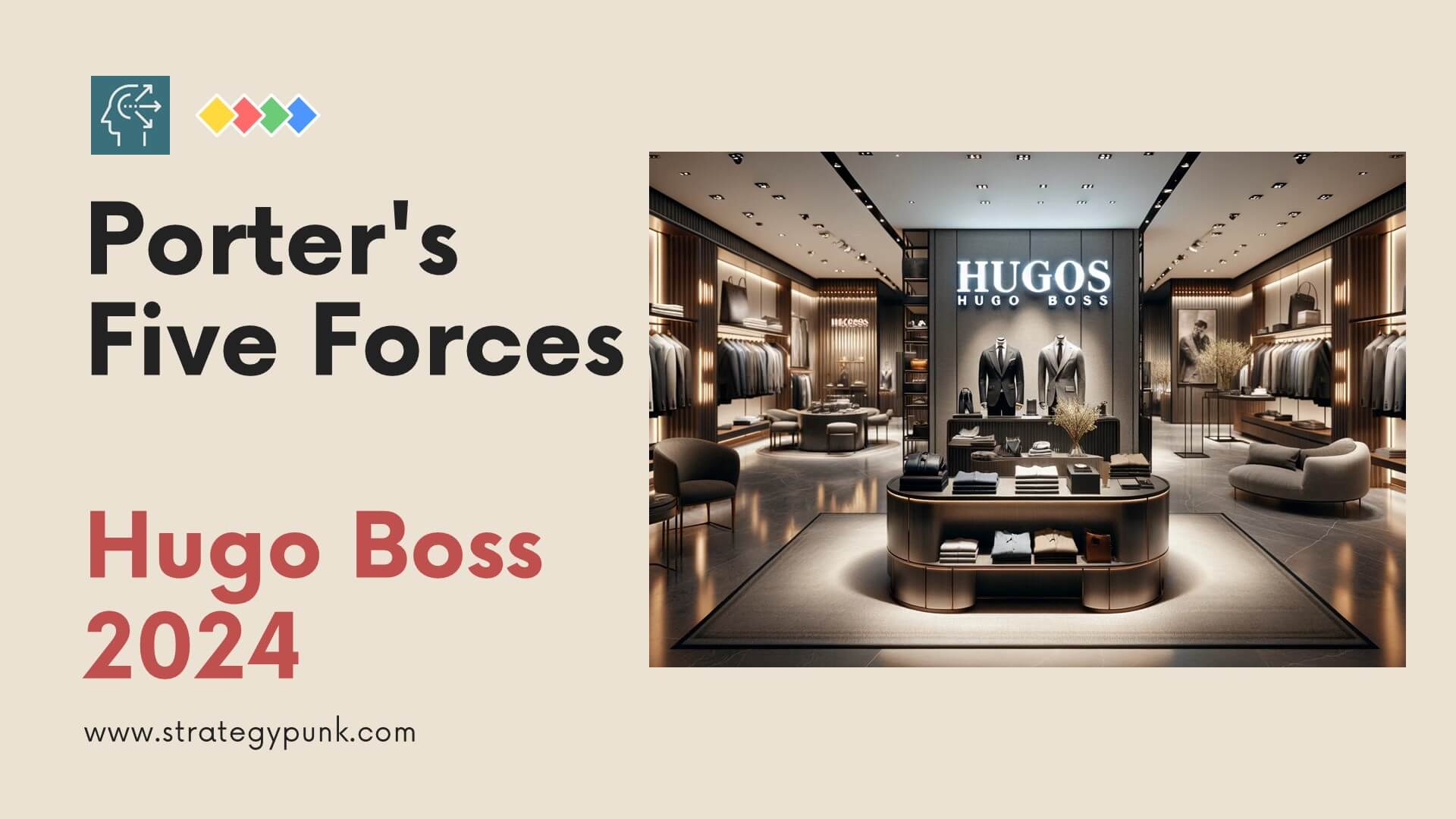
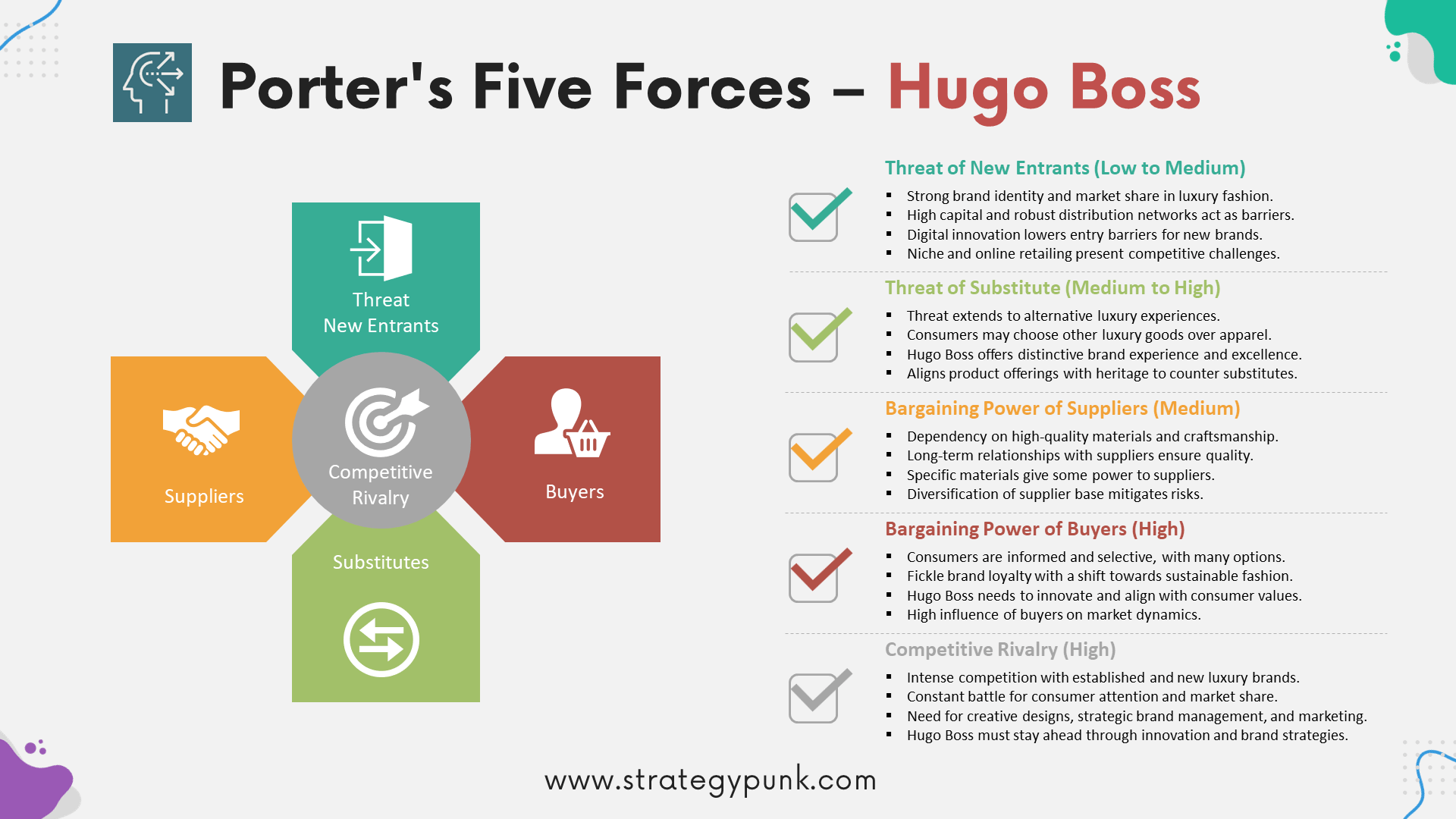
Hugo Boss Porter's 5 Forces Analysis Slide Deck
Hugo Boss Porter's 5 Forces Analysis PowerPoint Template
Hugo Boss Porter's 5 Forces Analysis PDF Template
Discover more
Clickworthy Resources
Michael E. Porter's Five Forces: Free PowerPoint Template
Michael E. Porter's Five Forces Framework is a powerful tool for analyzing the competitive forces shaping industry dynamics and strategizing for business success. This free PowerPoint template offers a visually engaging way to present these concepts, helping you illustrate the intensity of competition, the profitability of an industry, and strategic options.
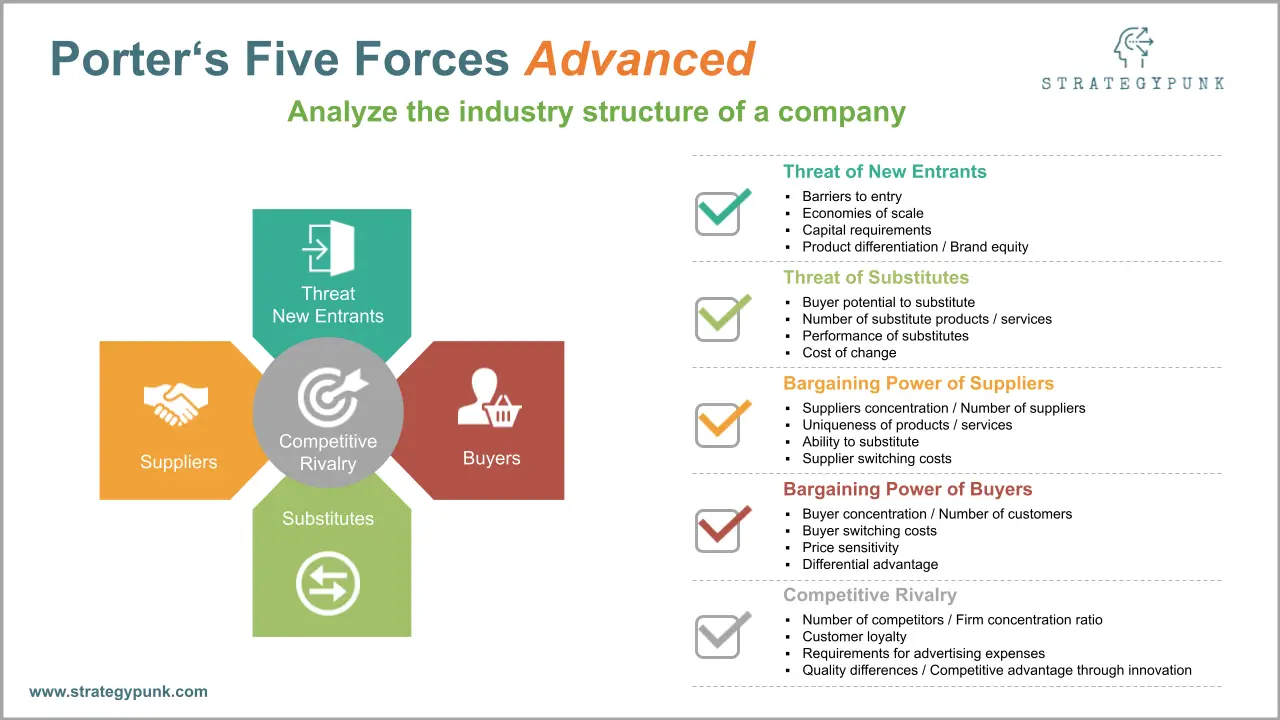
Strategic Insights 2024: A SWOT Analysis of Hugo Boss
Free PowerPoint Template for Hugo Boss SWOT Analysis 2024: Get in-depth insights into strengths, weaknesses, opportunities, and threats. Perfect for strategic planning.
